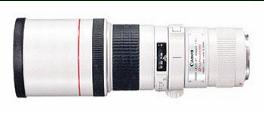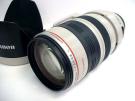Big Heavy Bigma vs Light Weight Canon 400mm F5.6 L
Let me make my observations based on two sets of examples, the first being between the Sigma 50-500 (Bigma) and the Canon 400mm f5.6. The 400mm f5.6 Canon is well known because of it's optical sharpness and also for it's light weight, the Sigma because of it's incredible range and it's bazooka like length and weight to match. I have owned a Sigma 50-500 for some time and being that I don't own any of the long 2.8 lenses or the 500 or 600mm Canons, the Sigma is the heaviest lens in my collection.
Over the time that I have owned the Bigma I am often amazed at how many shots come out good, while hand holding at the 500mm length, with amazingly slow shutter speeds. 1/80th - 1/250th. Many times, using good technique, the cardinal rule of "shutter speed should equal focal length" can be broken by a significant amount.
Now conversely, while hand holding the lightweight 400mm F5.6 lens at low shutters speeds, I see a larger percentage of images that do not turn out as well.





